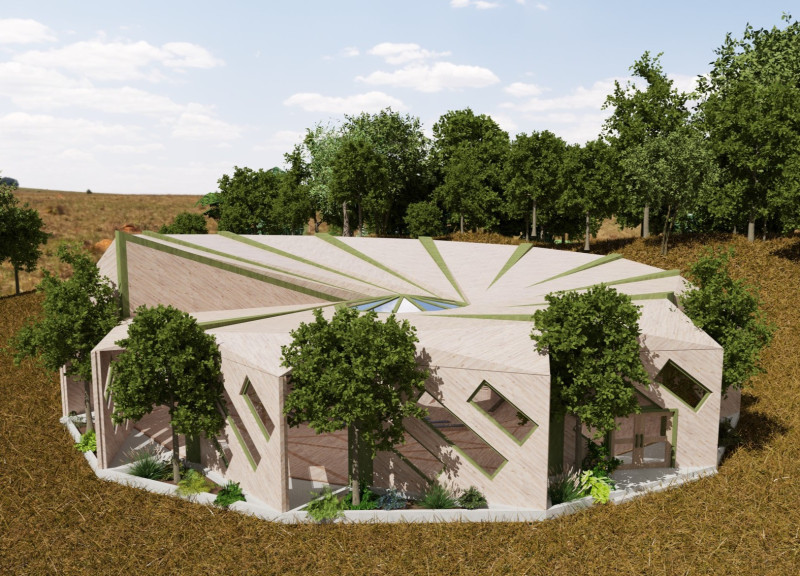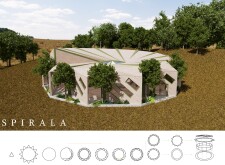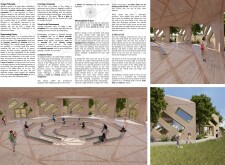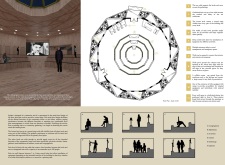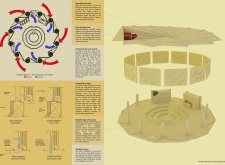5 key facts about this project
Spirala is designed to accommodate various activities and gatherings, catering to a diverse group of users. Its octagonal layout emanates from a central core, symbolizing unity and connectivity, while its unique spiraling form encourages exploration and interaction. This architectural design focuses on fostering a sense of belonging and community engagement, allowing for seamless transitions between individual and group activities.
The structure’s materiality plays a crucial role in conveying its architectural intent. Predominantly made from high-quality wood, the building utilizes this renewable resource to create a warm and inviting atmosphere that reflects its natural surroundings. The timber employed is complemented by high-performance skylight prism glass, which strategically channels natural light into the interior spaces while minimizing energy consumption. Steel reinforcement elements ensure structural resilience, allowing for creativity in the design without sacrificing safety or stability. Additionally, the varied textured wood panels present in the design not only enhance aesthetic diversity but also contribute to unique interior experiences.
One of the most notable features of Spirala is its overlapping roof structure, which extends outward to create protective overhangs. These overhangs serve a dual purpose: providing shelter from the elements and drawing users outside, thereby enhancing the overall connection between the building and the landscape. The roof design further incorporates intelligent ventilation systems that utilize natural airflow to maintain a comfortable indoor climate, reducing dependency on mechanical systems. This thoughtful approach allows for the collection of rainwater for irrigation purposes, reinforcing the project's commitment to sustainability.
Internally, Spirala is arranged to encourage social interaction and community use. The open layout supports a variety of functions, from artistic performances to educational workshops. Key design elements such as strategically placed skylights illuminate communal areas, fostering an environment that promotes collaboration and creativity. The floor plan is designed with accessibility in mind, incorporating ramps and wide pathways to ensure that all individuals can navigate the space comfortably.
The architectural design of Spirala stands out for its focus on sustainability and energy efficiency while also prioritizing user experience. Through the innovative use of renewable materials and design strategies aimed at minimizing ecological impact, the project positions itself as a forward-thinking model for community-focused architecture. As users move within and around Spirala, they encounter a space that not only serves its intended functions but also enriches their lives by encouraging them to engage with each other and with nature.
For those interested in a deeper exploration of this architectural project, examining the architectural plans, sections, and detailed designs will provide valuable insights. Spirala’s thoughtful integration of design principles serves as an important case study in modern architecture, demonstrating how structures can meaningfully contribute to community life while harmonizing with their environment. Discover more about Spirala and its innovative architectural ideas by delving into its detailed presentation.


